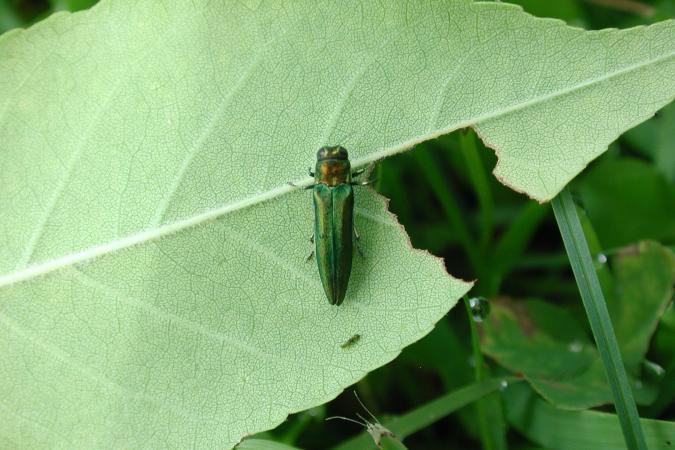It was only a matter of time. The emerald ash borer (EAB), an insect native to China, eastern Russia, Japan, and Korea, was found in Orange County Vermont in February 2018. First discovered in the US in southeastern Michigan in 2002, this small beetle is responsible for killing millions of ash trees in North America. While there is currently no proven solution to stopping the EAB, research conducted in the upper-midwest suggests that forest birds may have an important role to play in the fight against this exotic invader.

Adult EAB beetles lay eggs on the bark of ash trees. When the eggs hatch, the larvae bore into the bark and begin feeding. This disrupts the movement of nutrients and water within the tree, girdling it and causing the tree to die. Fortunately, Vermont’s forests provide habitat for a variety of bark-foraging birds, such as woodpeckers and nuthatches. When these birds are working their way up and down the trunk of a tree they are often searching for an insect to eat including, as it turns out, emerald ash borer larvae.
A 2013 study conducted in Ohio (Flower et al) provides valuable insights into the interactions between forest birds and emerald ash borers. Results of the study show that in a forest impacted by EAB, bark-foraging birds forage more heavily on ash trees than non-ash trees, and that they prefer to forage on ash trees that show signs of health decline, presumably due to EAB impacts, instead of foraging on trees that were more visually healthy. This would suggest that the birds use visual clues to identify which trees are infested. The study also reports that a sampling of 46 ash trees shows that birds significantly reduce the densities of EAB larvae by upwards of 85%. So, although the trees that the birds foraged EAB from are past the point of saving, there may be up to 85% fewer adults able to eventually emerge from the trees and fly to infect more ash trees.
What does this all mean for Vermont? One fact rings clear - native bark-foraging birds are going to be allies in the fight to reduce the impacts of EAB on our forests. These allies include Red-bellied, Downy, Hairy and Pileated Woodpecker, Northern Flicker, Yellow-bellied Sapsucker, White-breasted and Red-breasted Nuthatch, and Brown Creeper. We can’t expect that these birds will eradicate EAB or prevent its spread to other areas of the state. What they will likely do is to provide a measure of control on the EAB populations. And at this point let’s take any help we can get on the war against EAB.
To learn more about what you can do to support bird allies in the battle on EAB on your land visit http://vt.audubon.org/conservation/landowners
To learn more about emerald ash borer in Vermont, including an up to date known distribution, go to https://vtinvasives.org/invasive/emerald-ash-borer







